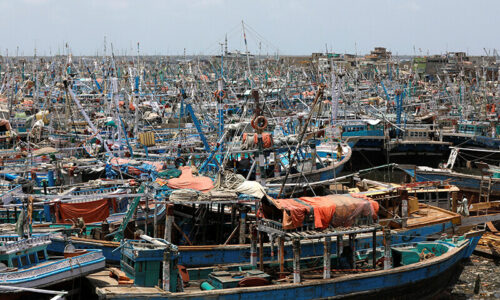KARACHI -UNS: The National Disaster Management Authority (NDMA) on Sunday urged people to stay away from shorelines as Cyclone Biparjoy, which is heading towards the coastal areas of Pakistan and India, lay at a distance of about 760 kilometres south of Karachi.
According to state-run Radio Pakistan, the NDMA also called on people to follow local authorities’ guidance in any emergency situation. Over the past few days, the Karachi commissioner has banned entry to the beaches in Karachi, as well as fishing, sailing, swimming, and bathing at seas within the territorial limit of Karachi owing to the threat from today till the end of the storm.
However, a considerable number of people could be seen present at Karachi’s Seaview despite the government’s directives to stay away from the shore.
It came as the Pakistan Meteorological Department (PMD), in an official statement, said the cyclone had now further intensified into an “extremely severe cyclonic storm”.
It said the system was at a distance of about 760km south of Karachi, 740km south of Thatta and 840km southeast of Ormara.
The Met department located the cyclone near latitude 18.1°N and longitude 67.5°E, and said the system is “most likely to track further northward until June 14 morning”.
It added that the cyclone will then recurve northeastward and cross between Keti Bandar (southeast Sindh) and the Indian Gujrat coast on June 15 as a “very severe cyclonic storm”.
The PMD said the cyclone’s maximum sustained surface winds were 150-160km per hour while gusts as high as 180km/h were around the system centre. Sea conditions were “phenomenal around the system centre with maximum wave height 35-40 feet”, it added.
It further said, “The favourable environmental conditions (sea surface temperature of 30-32°C, low vertical wind shear and upper-level divergence) are supporting the system to maintain its intensity.”
The PMD’s daily forecast also noted that “dust-raising/gusty winds are expected in central/southern districts of the country” on Sunday and Monday afternoons.
Separately, the NDMA quoted the Pacific Disaster Centre (PDC) stating that around 1.38 million people from both Pakistan and India were exposed to the cyclone, of which 305,755 were among the vulnerable population.




